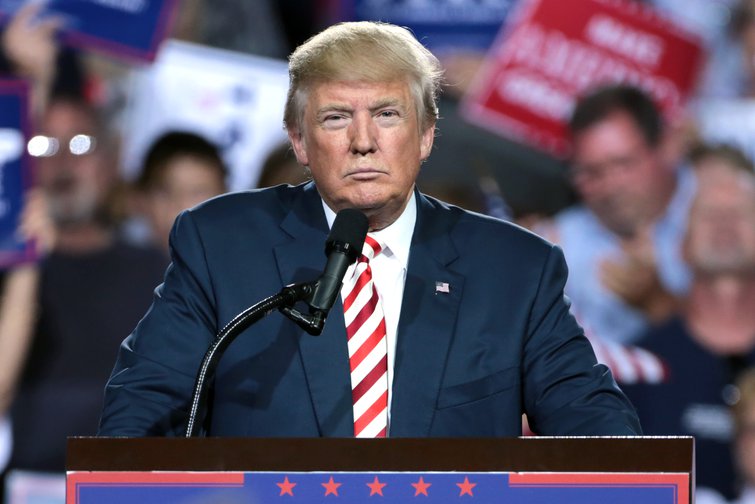The face and culture of the United States have always been changing as different races and ethnic groups flow into the country and redefine what it means to be "American." And in recent years, some of the biggest impacts have come from Asian Americans and Pacific Islanders.
Over the past decade, the group's numbers have grown, and so has its footprint as it becomes a bigger part of communities across the country. With May being Asian American and Pacific Islander Heritage Month, the Data Download this week looks at the diverse AAPI population and its growing impact on politics.
The first thing that jumps out when you look at the Asian American and Pacific Islander population is its sheer growth over the past 10 years, particularly compared to the nation as a whole.
From 2011 to 2019, the Asian American population climbed from about 18.2 million to 23.2 million people, according to the census, an increase of 27 percent. That is massive growth, especially when you consider that the U.S. population as a whole grew much more slowly, by about 5 percent.
But the numbers miss one of the larger points about the AAPI population — the enormous diversity of the group, which is placed under a single heading in the data. And when you break the census' larger "Asian" group into a subset of ethnicities and nationalities, the growth numbers look different.
Among the largest ethnic and national groups, the biggest growth came among the country's Indian population, which grew by more than 1.4 million people, or 44 percent. The Chinese population grew by more than 1.1 million, or 29 percent. The Filipino population grew by 777,000 people, and the Vietnamese population climbed by more than 300,000.
But that only scratches the surface of all the ethnicities and nationalities that fall into the AAPI group. There are more than 20 overall in the census numbers, from Japanese to Pakistani to Indonesian. It's a massive collection of different people and cultures that come from an enormous swath of land, and the populations of nearly all of them have grown by double-digit percentages in the last decade.
Even more dramatic than the national growth of the AAPI population, however, is the growth in specific parts of the country. At these local levels, spikes in population numbers can have especially large impacts, changing issue focuses and voting behaviors of cities, congressional districts or even states.
The numbers have jumped dramatically in a diverse set of communities at the county level over the last decade. The numbers are based on counties where the group makes up at least 20,000 of the total population.
You can see a lot of Texas communities on the list — five of the top 10 counties — in the suburban counties around three of the state's metropolitan areas, Dallas and Fort Worth, Houston and Austin. But there are also Forsyth County, in the suburbs around Atlanta, and Loudoun County, just outside Washington, D.C.
But also on the top 10 list are the big-city counties around Indianapolis: Omaha, Nebraska; and Raleigh, North Carolina. And a little farther down are counties in Ohio, Oklahoma, Colorado and Pennsylvania. The point is that this is a rapidly growing population that is reaching beyond the states and communities that are often thought of as its traditional bases.
And all of that growth could have big political impacts.
Polling data in the 2020 election showed that Asian Americans skewed heavily toward Democrat Joe Biden. The poll, sponsored by a collection of AAPI groups and conducted just before the election, showed that Biden was the choice of those voters by 24 points overall, with differences among the ethnic and national heritages.
Among most of the largest AAPI populations in the U.S., there was a strong tilt toward Biden. Those of Chinese heritage gave Biden a 36-point edge. Those with Indian backgrounds favored Biden by 37 points. And among Filipinos, Biden was favored by 18 points.
But those with Vietnamese backgrounds chose President Donald Trump. Trump didn't get a majority of Vietnamese voters, but he held a strong plurality, with a 12-point edge.
It's hard to know for certain what's driving the differences. The ethnicities rise out of very different cultures and histories. For Vietnamese Americans, in particular, the words "socialism" and "communism" may hold especially negative connotations. Many people fled Vietnam during its civil war and the arrival of its communist government.
But together, the poll numbers show how complicated and diverse the AAPI group is, and they suggest that, on the whole, Democrats seem to hold an edge with them, at least for now.
"For now" is important. Reading too much into the politics of the group, particularly in this turbulent moment in American politics, might not be wise. As the AAPI population grows and spreads into different communities, it is likely to change, as well. Historically, that has often been the case as different racial and ethnic groups grow.
The one thing that seems certain, however, is that the political power of the AAPI population is growing. And as the population spreads, its impacts are being felt across the country.
Source:-https://news.yahoo.com/aapi-growth-big-political-impacts-151028439.html




